Home / Past Newsletters / November 2013
November 2013 newsletter
We've gathered together some ideas for Christmas gifts, from cheap and cheerful to more exotic. Creating your own gifts can transform your Christmas present list into something that's fun.
If you live in the South Island, plan for Christmas now! The freight bottleneck at Cook Strait means that at the moment your order may take five days longer than usual to get to you, and it could get worse.
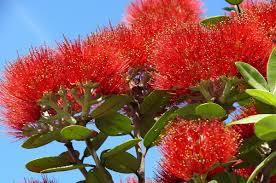 In this issue:
In this issue:

For those of you in the South Island, Christmas planning needs to start now!
Our courier says that with the Aratere ferry out of action, there will be “significant issues… with freight movements across Cook Strait.”
Currently there can be delays of 5 days for orders going to the South Island – there is a bottleneck at the Wellington wharves that seems to be getting worse in spite of all efforts to sort it.

So if you need supplies for making Christmas products, or if you have a gift or two in the back of your mind, ACT NOW!
Christmas deliveries
Last year getting orders to you in the last week before Christmas was a nightmare. Deliveries were taking a week to cross Auckland city.
At the risk of sounding like my mother, please remember that Xmas doesn’t come as a surprise. Start preparing now!
We will be closed over the holiday period, re-opening on 6 January.
New products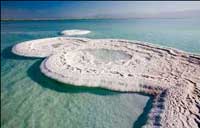
We now stock three products from the Dead Sea:
Dead Sea mineral mud for your face, magnesium chloride to soak away aches and itches, and the exfoliant Dead Sea Salt.
Give yourself an exotic experience!
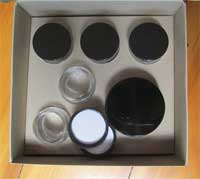
New packaging for kits
Our cold process soap kits have been packed in elegant black boxes - and now our other kits come in their own embossed box. Shown is the lip balm kit, with ingredients and five 15g jars - so simple but satisfying to make.
Christmas gift ideas
Here are some ideas from quick to more time-consuming.
Some cost very little; others are more expensive.
Need it yesterday?
Order a book or a kit online and we can send it direct to the recipient.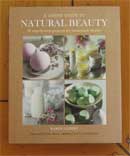
A Green Guide to Natural Beauty is a beautiful gift for someone interested in making their own skincare, and we also have a choice of books on soapmaking.
Our beautifully presented kits have all ingredients and instructions.
Melt and pour soap kits are fun for kids, and adults enjoy them too. Check out the mini kits, with a mould, some soap, fragrance and maybe mica for colouring.
Cold process soap making is not for children, but it's immensely satisfying. Pure, real soap is wonderful to use, and making it is addictive.
Then there is our range of body and hair care kits. The body butter and lip balm kits are great gifts, with a choice of fragrances (and also unfragranced).

A pot of skincare clay makes a much appreciated gift. From now until Christmas, 200ml pots of our three favourite French clays will be available on the website. The label has instructions for use (mix a tablespoon or two with a little water to make a face mask).
Want to make your own, but have little time?
Keep on hand a bottle of a lovely oil such as organic jojoba or organic rosehip, and some 20ml dropper bottles that you can fill. Make handmade labels for the 20ml bottles, and you have some gifts!
If you buy 20ml bottles and need some blank labels, tell us in the message box when you order, and we will include some with your order.
A small bottle of skincare oil also makes a great last-minute gift for those people that unexpectedly give you something, and you'd like to reciprocate...
A bit more time?
Use one of our recipes to make something that you can put in individual jars:
You can get really creative!
Summer Cream
(makes about 400g)
Water Phase
330g water
26g glycerin
Oil Phase
50g shea butter
26g peach kernel oil
24g argan oil
24g emulsifier NF
10g cetearyl alcohol
Last Phase
14g aloe gel
2g Microcare DB (or Geogard 221)
2g essential oil/fragrance oil
Method
Summer Shea Whip
(Makes 400g)
300g shea butter
100g rosehip oil
2g essential oil/fragrance oil (optional)
Summer Hair Repair
(Makes 200g)
100g macadamia oil
30g conditioning pellets
30g shea butter
20g hazelnut oil
10g cetearyl alcohol
10g polysorbate 20
few drops coconut fragrance oil (optional)
Comb through dry hair before going to the beach. Will protect your hair and will wash out.
Comb a liberal amount through your dry hair and wrap hair in clingfilm. Leave on for 30 minutes or overnight. Wash out.
Vanilla Shampoo Bars
(Great for holidays and going to the gym where liquids can be irritating.)
(Makes 4x 100g bars)
In a double boiler, heat the following:
240g SCI surfactant
60g decyl glucoside
40g cocamidopropyl betaine
20g conditioner pellets
12g cetearyl alcohol
8g cocoa butter
When the above pellets are melted (it looks slushy, not liquid):
Add
4g hydrolysed wheat protein
4g D-panthenol
4g cococaprylate
4g vanilla essential oil
Mix it all up using a spatula and press into moulds. (Go Native’s framed rectangle mould is good for this.)
Unmould when it's cold and hard, in about 24 hours.
Vanilla Conditioner Bars
(Great for holidays and going to the gym where liquids can be irritating.)
(Makes 2x 100g bars)
170g conditioner pellets
30g cetearyl alcohol
30g cocoa butter
Melt the above and add:
10g glycerin
6g hydrolysed wheat protein
4g D-panthenol
2g Geogard 221
2g vanilla essential oil
Pour into moulds and leave to set. (Go Native’s framed rectangle mould is good for this.)
To use: Swipe through wet hair, massage scalp, rinse off.
Making your own sunscreen
 In the last few months, many of you have asked for advice on making sunscreens. You want to make sun protection creams that avoid the chemical component of conventional sunscreens. We don’t have expertise or even much experience in making sunscreens, so we’ve always avoided sounding like an authority in this area. So much is at stake, as over-exposure to the sun can have long-term effects.
In the last few months, many of you have asked for advice on making sunscreens. You want to make sun protection creams that avoid the chemical component of conventional sunscreens. We don’t have expertise or even much experience in making sunscreens, so we’ve always avoided sounding like an authority in this area. So much is at stake, as over-exposure to the sun can have long-term effects.
So… this article is background information only. If you want to create sunscreen products for you and your family to use, you need to be vigilant and take responsibility for avoiding skin damage.
Mineral-based sunscreens are basically zinc oxide mixed into a water-based cream. Essential oils can be added for their fragrance and antioxidant properties – but avoid citrus oils, which can sensitise the skin in sunshine.
You can make your own creams – see Recipes – or add zinc oxide to our light moisturiser or rich moisturiser. If you make your own cream, you can use oils that help your skin survive the sun – see below.
Zinc oxide
Zinc oxide is a mineral that has long been used as a barrier to UV rays. It sits on the outer layer of the skin, where it scatters and absorbs both UVA and UVB.
Zinc oxide powder mixed into a cream protects surfers’ noses and sportspeoples’ faces – and, with a lighter cream, it can be used on bodies as well.
Which oils?
Some plant oils enhance the skin’s natural sun protection mechanisms. Oils that are credited with helping the skin cope with UV include:
sesame oil
virgin coconut oil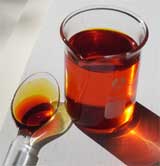
raspberry seed oil
sea buckthorn oils
sunflower oil
avocado oil
camellia oil
jojoba oil
hazelnut oil
shea butter
Most of these probably have a SPF of 2-3, which is a tiny fraction of a commercial sunscreen – but they do enhance the skin’s built-in sun protection.
Choose the best quality and least processed oils, as they are likely to contain tiny but significant amounts of nutrients that may be lost during processing. Organically grown oils usually come from less depleted soils, so may contain trace nutrients missing from industrial-scale oils.
Carotenoids research
For the first time I’ve come across information about a carefully researched suncare product containing carotenoids. Looks like science might be catching up with the Old Wives’ Tales!
A new top-of-the-range European sunscreen claims that it not only blocks UV light, but also releases antioxidants which reduce skin damage and ageing.
What’s interesting is that the “magic” ingredients are carotenoids (isolated from tomatoes) which do both jobs: provide UV protection and reduce skin damage.
They explain that the new product doesn’t have a high SPF, but it enhances the skin’s own natural sun protection. Inflammation can be reduced, along with dryness and roughness.
They suggest using it under a conventional sunscreen for greater protection.
How does this relate to us, on islands in the South Pacific? It’s unlikely that this product would be released in New Zealand, because our higher latitude, clear skies and (at times) ozone depletion mean that we are exposed to higher levels of UV that Europeans. Peak UV intensities in New Zealand are about 40% greater than at comparable latitudes in Europe – and most Europeans live further north.
In New Zealand, we need to take care in the sun! Children are especially vulnerable. Skin damage can occur all too easily.
But this research indicates that vegetable oils can be part of our suncare.
Coping with natural carotenoids
These top researchers have isolated carotenoids which don’t have colour in the visible range. But in naturally occurring oils they are often orange to red. Oils such as our sea buckthorns and natural rosehip contain colourful carotenoids – so full of colour that a little goes a long way.
But I’ve experimented with putting pure sea buckthorn fruit oil on my skin, and seeing how long it took for the colour to disappear. It seemed to vary in different parts of the body, but had always disappeared in ten minutes on my skin. I imagine this varies a lot from person to person. One drawback with using undiluted oil is that it may cause staining to clothing, which may not show up till after washing.
Commercial skincare products dilute strongly coloured oils in other skin-friendly oils. You could blend them in with one or more of the sun-friendly oils.
The role of food
What we eat can influence how well our skin copes with the sun. Lots of dark leafy greens, and lots of colourful vegetables and fruits, will help with good skin levels of antioxidants to protect against sun damage. A lengthy and cautious article on this can be found at this open-access website – enter phytonutrients in the title/keyword search box.
http://www.mdpi.com/journal/nutrients
From last year’s December newsletter, here's a recipe for a before-sun oil that will care for your skin and may help it deal with those UV rays. If you're exposed for more than a short time, apply sunscreen and/or cover up as soon as there's any hint of redness or a feeling of heat.

Recipe: Before-sun oil (adapted from Kolbjorn Borseth's book The Aromantic Guide)
55ml sesame oil
15ml sunflower oil or camellia oil
10g shea butter (gently warmed) or avocado oil
10ml jojoba oil
10ml vitamin E
In conclusion
We’re all looking forward to summer days at the beach – and part of that may be that our bodies are desperate to top up on vitamin D after a winter inside. So we are on a tightrope, balancing our built-in desire to feel the sun on our skin with the need for protection from the damaging part of the UV spectrum. Let some of those warming rays soak in – but not too many! Good luck in creating the perfect balance!
 That's it for this time!
That's it for this time!
Have a refreshing summer break!
If you haven't already, visit us on Facebook!
Many many thanks for your custom over the past year.
We really appreciate it.
Best wishes
Elinor, Chelsea and Jacqui
If you live in the South Island, plan for Christmas now! The freight bottleneck at Cook Strait means that at the moment your order may take five days longer than usual to get to you, and it could get worse.
 In this issue:
In this issue:
- South Island freight
- Dates for Christmas deliveries
- New products
- New packaging for skincare kits
- Christmas gift ideas
- New recipes: Summer cream, Summer shea whip, Summer hair repair, Vanilla shampoo bars, Vanilla conditioner bars
- Making your own sunscreen

For those of you in the South Island, Christmas planning needs to start now!
Our courier says that with the Aratere ferry out of action, there will be “significant issues… with freight movements across Cook Strait.”
Currently there can be delays of 5 days for orders going to the South Island – there is a bottleneck at the Wellington wharves that seems to be getting worse in spite of all efforts to sort it.

So if you need supplies for making Christmas products, or if you have a gift or two in the back of your mind, ACT NOW!
Christmas deliveries
Last year getting orders to you in the last week before Christmas was a nightmare. Deliveries were taking a week to cross Auckland city.
At the risk of sounding like my mother, please remember that Xmas doesn’t come as a surprise. Start preparing now!
We will be closed over the holiday period, re-opening on 6 January.
New products

We now stock three products from the Dead Sea:
Dead Sea mineral mud for your face, magnesium chloride to soak away aches and itches, and the exfoliant Dead Sea Salt.
Give yourself an exotic experience!

New packaging for kits
Our cold process soap kits have been packed in elegant black boxes - and now our other kits come in their own embossed box. Shown is the lip balm kit, with ingredients and five 15g jars - so simple but satisfying to make.
Christmas gift ideas
Here are some ideas from quick to more time-consuming.
Some cost very little; others are more expensive.
Need it yesterday?
Order a book or a kit online and we can send it direct to the recipient.

A Green Guide to Natural Beauty is a beautiful gift for someone interested in making their own skincare, and we also have a choice of books on soapmaking.
Our beautifully presented kits have all ingredients and instructions.
Melt and pour soap kits are fun for kids, and adults enjoy them too. Check out the mini kits, with a mould, some soap, fragrance and maybe mica for colouring.
Cold process soap making is not for children, but it's immensely satisfying. Pure, real soap is wonderful to use, and making it is addictive.
Then there is our range of body and hair care kits. The body butter and lip balm kits are great gifts, with a choice of fragrances (and also unfragranced).

A pot of skincare clay makes a much appreciated gift. From now until Christmas, 200ml pots of our three favourite French clays will be available on the website. The label has instructions for use (mix a tablespoon or two with a little water to make a face mask).
Want to make your own, but have little time?
Keep on hand a bottle of a lovely oil such as organic jojoba or organic rosehip, and some 20ml dropper bottles that you can fill. Make handmade labels for the 20ml bottles, and you have some gifts!
If you buy 20ml bottles and need some blank labels, tell us in the message box when you order, and we will include some with your order.
A small bottle of skincare oil also makes a great last-minute gift for those people that unexpectedly give you something, and you'd like to reciprocate...
A bit more time?
Use one of our recipes to make something that you can put in individual jars:
- Lip balm
- Hair mask
- Butters - make some Summer Shea Whip, or something from the website.
You can get really creative!
- Creams - see recipes on the website, or try Summer Cream below.
- Make a batch of cold-process soap, cut it into individual bars, and wrap for gifts
- Choose some moulds and buy a bar or two of melt and pour soap. Have fun adding fragrance and mica for soaps that only you would have created!
Summer Cream
(makes about 400g)
Water Phase
330g water
26g glycerin
Oil Phase
50g shea butter
26g peach kernel oil
24g argan oil
24g emulsifier NF
10g cetearyl alcohol
Last Phase
14g aloe gel
2g Microcare DB (or Geogard 221)
2g essential oil/fragrance oil
Method
- Heat separately the water and oil phases until they reach 65degC.
- Combine the two phases and blend (with a stick blender) on and off until you are sure the mixture won’t separate.
- Continue to blend occasionally until it starts to thicken.
- Add the last phase ingredients and blend.
- Spoon into pots.
Summer Shea Whip
(Makes 400g)
300g shea butter
100g rosehip oil
2g essential oil/fragrance oil (optional)
- Melt shea butter until it is slightly soft only, not completely melted.
- Add rosehip oil.
- Whip with an electric whisker as you would for whipping cream (not a stick blender) until it has doubled in volume.
- If the mixture is too soft, pop it in the fridge until it hardens up a little then continue to whip.
- Spoon into jars.
Summer Hair Repair
(Makes 200g)
100g macadamia oil
30g conditioning pellets
30g shea butter
20g hazelnut oil
10g cetearyl alcohol
10g polysorbate 20
few drops coconut fragrance oil (optional)
- Combine everything but the fragrance oil in a pot and melt gently on the stovetop.
- Add the fragrance oil and stir to blend. Pour into a wide-mouthed jar and leave to set.
Comb through dry hair before going to the beach. Will protect your hair and will wash out.
Comb a liberal amount through your dry hair and wrap hair in clingfilm. Leave on for 30 minutes or overnight. Wash out.
Vanilla Shampoo Bars
(Great for holidays and going to the gym where liquids can be irritating.)
(Makes 4x 100g bars)
In a double boiler, heat the following:
240g SCI surfactant
60g decyl glucoside
40g cocamidopropyl betaine
20g conditioner pellets
12g cetearyl alcohol
8g cocoa butter
When the above pellets are melted (it looks slushy, not liquid):
Add
4g hydrolysed wheat protein
4g D-panthenol
4g cococaprylate
4g vanilla essential oil
Mix it all up using a spatula and press into moulds. (Go Native’s framed rectangle mould is good for this.)
Unmould when it's cold and hard, in about 24 hours.
Vanilla Conditioner Bars
(Great for holidays and going to the gym where liquids can be irritating.)
(Makes 2x 100g bars)
170g conditioner pellets
30g cetearyl alcohol
30g cocoa butter
Melt the above and add:
10g glycerin
6g hydrolysed wheat protein
4g D-panthenol
2g Geogard 221
2g vanilla essential oil
Pour into moulds and leave to set. (Go Native’s framed rectangle mould is good for this.)
To use: Swipe through wet hair, massage scalp, rinse off.
Making your own sunscreen
 In the last few months, many of you have asked for advice on making sunscreens. You want to make sun protection creams that avoid the chemical component of conventional sunscreens. We don’t have expertise or even much experience in making sunscreens, so we’ve always avoided sounding like an authority in this area. So much is at stake, as over-exposure to the sun can have long-term effects.
In the last few months, many of you have asked for advice on making sunscreens. You want to make sun protection creams that avoid the chemical component of conventional sunscreens. We don’t have expertise or even much experience in making sunscreens, so we’ve always avoided sounding like an authority in this area. So much is at stake, as over-exposure to the sun can have long-term effects.So… this article is background information only. If you want to create sunscreen products for you and your family to use, you need to be vigilant and take responsibility for avoiding skin damage.
Mineral-based sunscreens are basically zinc oxide mixed into a water-based cream. Essential oils can be added for their fragrance and antioxidant properties – but avoid citrus oils, which can sensitise the skin in sunshine.
You can make your own creams – see Recipes – or add zinc oxide to our light moisturiser or rich moisturiser. If you make your own cream, you can use oils that help your skin survive the sun – see below.
Zinc oxide
Zinc oxide is a mineral that has long been used as a barrier to UV rays. It sits on the outer layer of the skin, where it scatters and absorbs both UVA and UVB.
Zinc oxide powder mixed into a cream protects surfers’ noses and sportspeoples’ faces – and, with a lighter cream, it can be used on bodies as well.
Which oils?
Some plant oils enhance the skin’s natural sun protection mechanisms. Oils that are credited with helping the skin cope with UV include:
sesame oil
virgin coconut oil

raspberry seed oil
sea buckthorn oils
sunflower oil
avocado oil
camellia oil
jojoba oil
hazelnut oil
shea butter
Most of these probably have a SPF of 2-3, which is a tiny fraction of a commercial sunscreen – but they do enhance the skin’s built-in sun protection.
Choose the best quality and least processed oils, as they are likely to contain tiny but significant amounts of nutrients that may be lost during processing. Organically grown oils usually come from less depleted soils, so may contain trace nutrients missing from industrial-scale oils.
Carotenoids research
For the first time I’ve come across information about a carefully researched suncare product containing carotenoids. Looks like science might be catching up with the Old Wives’ Tales!
A new top-of-the-range European sunscreen claims that it not only blocks UV light, but also releases antioxidants which reduce skin damage and ageing.
What’s interesting is that the “magic” ingredients are carotenoids (isolated from tomatoes) which do both jobs: provide UV protection and reduce skin damage.
They explain that the new product doesn’t have a high SPF, but it enhances the skin’s own natural sun protection. Inflammation can be reduced, along with dryness and roughness.
They suggest using it under a conventional sunscreen for greater protection.
How does this relate to us, on islands in the South Pacific? It’s unlikely that this product would be released in New Zealand, because our higher latitude, clear skies and (at times) ozone depletion mean that we are exposed to higher levels of UV that Europeans. Peak UV intensities in New Zealand are about 40% greater than at comparable latitudes in Europe – and most Europeans live further north.
In New Zealand, we need to take care in the sun! Children are especially vulnerable. Skin damage can occur all too easily.
But this research indicates that vegetable oils can be part of our suncare.
Coping with natural carotenoids
These top researchers have isolated carotenoids which don’t have colour in the visible range. But in naturally occurring oils they are often orange to red. Oils such as our sea buckthorns and natural rosehip contain colourful carotenoids – so full of colour that a little goes a long way.
But I’ve experimented with putting pure sea buckthorn fruit oil on my skin, and seeing how long it took for the colour to disappear. It seemed to vary in different parts of the body, but had always disappeared in ten minutes on my skin. I imagine this varies a lot from person to person. One drawback with using undiluted oil is that it may cause staining to clothing, which may not show up till after washing.
Commercial skincare products dilute strongly coloured oils in other skin-friendly oils. You could blend them in with one or more of the sun-friendly oils.
The role of food
What we eat can influence how well our skin copes with the sun. Lots of dark leafy greens, and lots of colourful vegetables and fruits, will help with good skin levels of antioxidants to protect against sun damage. A lengthy and cautious article on this can be found at this open-access website – enter phytonutrients in the title/keyword search box.
http://www.mdpi.com/journal/nutrients
From last year’s December newsletter, here's a recipe for a before-sun oil that will care for your skin and may help it deal with those UV rays. If you're exposed for more than a short time, apply sunscreen and/or cover up as soon as there's any hint of redness or a feeling of heat.

Recipe: Before-sun oil (adapted from Kolbjorn Borseth's book The Aromantic Guide)
55ml sesame oil
15ml sunflower oil or camellia oil
10g shea butter (gently warmed) or avocado oil
10ml jojoba oil
10ml vitamin E
In conclusion
We’re all looking forward to summer days at the beach – and part of that may be that our bodies are desperate to top up on vitamin D after a winter inside. So we are on a tightrope, balancing our built-in desire to feel the sun on our skin with the need for protection from the damaging part of the UV spectrum. Let some of those warming rays soak in – but not too many! Good luck in creating the perfect balance!
 That's it for this time!
That's it for this time!Have a refreshing summer break!
If you haven't already, visit us on Facebook!
Many many thanks for your custom over the past year.
We really appreciate it.
Best wishes
Elinor, Chelsea and Jacqui
